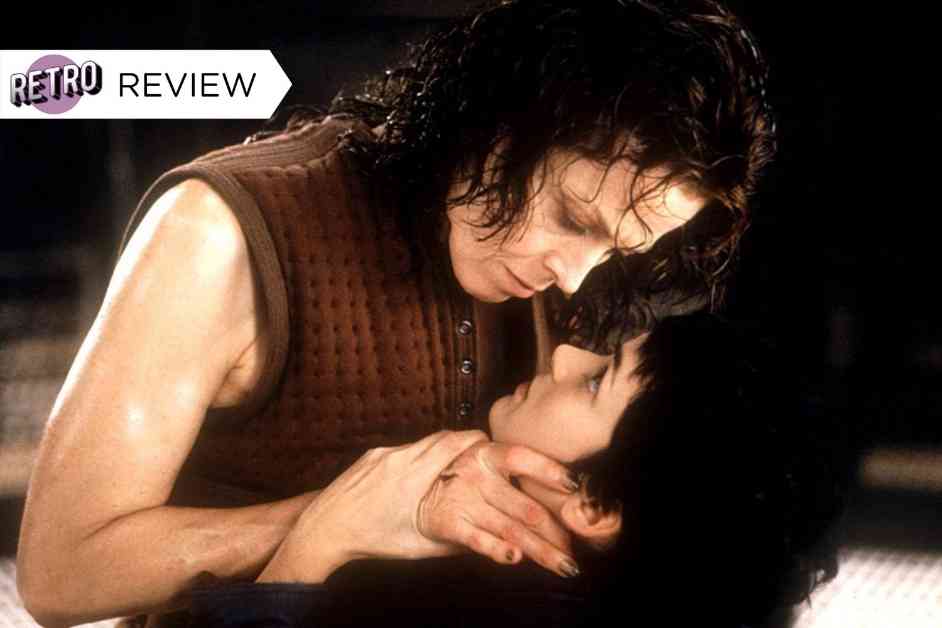Alien Resurrection: Uncovering Its Hidden Brilliance and Bizarre Twists
I was hesitant to revisit Alien Resurrection. Having initially seen it in theaters back in 1997 and left with a sense of disappointment, my memories of the film were less than favorable. Over the years, it had consistently ranked low on lists of Alien movies, leading me to believe that it was simply a bad installment in the franchise. However, I decided to challenge my preconceived notions and give the film another chance. By the time the credits rolled, I found myself pleasantly surprised and eager to admit that I had been wrong all along. Well, almost.
As the release of a new Alien film, Alien: Romulus, approached, I made the conscious decision to revisit the original movies in the series. Starting with Ridley Scott’s iconic Alien, it was clear that the film was a masterpiece. However, I opted to skip James Cameron’s Aliens, as it was already a personal favorite of mine. Moving on to David Fincher’s Alien 3, a film I hadn’t seen in its entirety in quite some time, I was left feeling underwhelmed. With another colleague having already delved into a retrospective of the film, I decided to skip it as well. This brought me to Alien Resurrection, a film that seemed to have little merit based on its reputation. Despite the low expectations, I’m grateful that I decided to give it a chance.
Set approximately 200 years after the events of Alien 3, Alien Resurrection opens with the resurrection of Ellen Ripley, played by Sigourney Weaver. However, this isn’t the same Ripley that audiences have come to know. She is a clone, created using DNA from the original Ripley that also contains the genetic material of an alien queen. This twist sets the stage for a unique and intriguing premise, allowing Weaver to portray a fresh take on her iconic character. The idea of Ripley being the mother of an alien queen introduces a fascinating dynamic, exploring the connection between Ripley and the alien species she has long fought against.
One of the standout aspects of Alien Resurrection is its ensemble cast of characters, portrayed by a talented group of actors. From Ron Perlman to Winona Ryder, the film features a diverse range of personalities that add depth to the narrative. Ryder’s character, initially introduced as a member of the crew, is later revealed to be an android with ties to Ripley’s past. This revelation adds an extra layer of complexity to the story, shedding light on Ryder’s knowledge of Ripley and the aliens.
Unlike its predecessors, Alien Resurrection offers a glimpse into the military and scientific efforts to study and weaponize the aliens. The film showcases the containment measures in place to handle the creatures, providing a rare look at the inner workings of the antagonistic forces. While these experiments ultimately lead to chaos, the exploration of this aspect adds a new dimension to the franchise’s lore.
However, Alien Resurrection is not without its flaws. While the film introduces compelling ideas, the execution falls short in some areas. The suspense and terror that defined the earlier films are lacking, partly due to outdated CGI effects and pacing issues. Despite these shortcomings, there are moments of brilliance, such as the intense underwater battle sequence that injects a sense of excitement and fun into the narrative.
The climax of Alien Resurrection takes a bold and controversial turn, introducing a human/alien hybrid born from the alien queen Ripley carries. While the concept is unsettling and imaginative, the execution leaves much to be desired. The design of the hybrid falls short of expectations, failing to fully realize the potential of this audacious idea. Despite its flaws, the film’s willingness to take risks and push the boundaries of the franchise is commendable.
In comparison to its predecessor Alien 3 and subsequent sequels, Alien Resurrection stands out for its wild, entertaining, and ambitious approach. While it may not be a perfect film, it offers a refreshing departure from the formulaic nature of the series. As the franchise continues to evolve, Alien Resurrection serves as a reminder of the importance of experimentation and innovation in storytelling.
In conclusion, Alien Resurrection may not be the most beloved entry in the Alien franchise, but it deserves recognition for its daring and unconventional approach. While it may not appeal to all viewers, it remains a unique and intriguing addition to the series. As the film and the rest of the franchise are now available for streaming on Hulu, it offers audiences the opportunity to revisit this underrated gem and form their own opinions on its hidden brilliance and bizarre twists.
Exploring the Unconventional Themes
Alien Resurrection is a film that dares to explore unconventional themes and concepts within the context of the Alien universe. By introducing the idea of a cloned Ripley with alien DNA, the film challenges preconceived notions of identity and humanity. This bold narrative choice allows for a deeper exploration of the relationship between Ripley and the alien species, offering a fresh perspective on their connection.
The Impact of a Diverse Ensemble Cast
One of the strengths of Alien Resurrection lies in its diverse ensemble cast, comprised of talented actors who bring depth and complexity to their characters. From Ron Perlman’s gruff yet endearing portrayal to Winona Ryder’s enigmatic performance, each member of the cast contributes to the film’s rich tapestry of personalities. This dynamic interplay adds layers of intrigue and emotion to the narrative, elevating the film beyond a typical sci-fi action flick.
The Legacy of Alien Resurrection
While Alien Resurrection may not have achieved the same level of critical acclaim as its predecessors, it has left a lasting impact on the Alien franchise. By pushing the boundaries of traditional storytelling and introducing bold new ideas, the film has carved out its own niche within the series. As fans continue to revisit the film and reassess its merits, Alien Resurrection stands as a testament to the power of innovation and creativity in the world of cinema.













